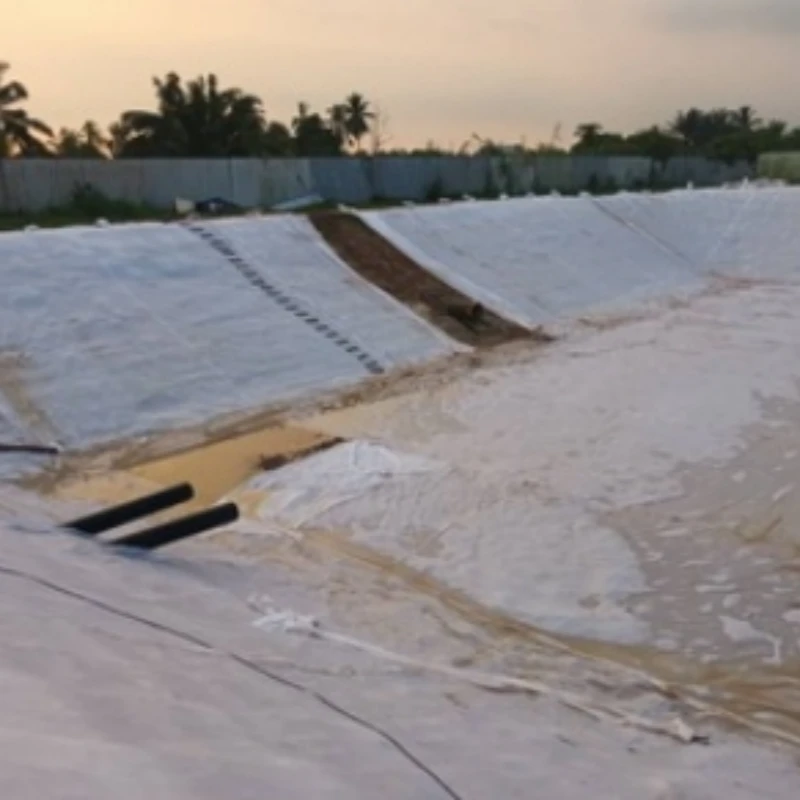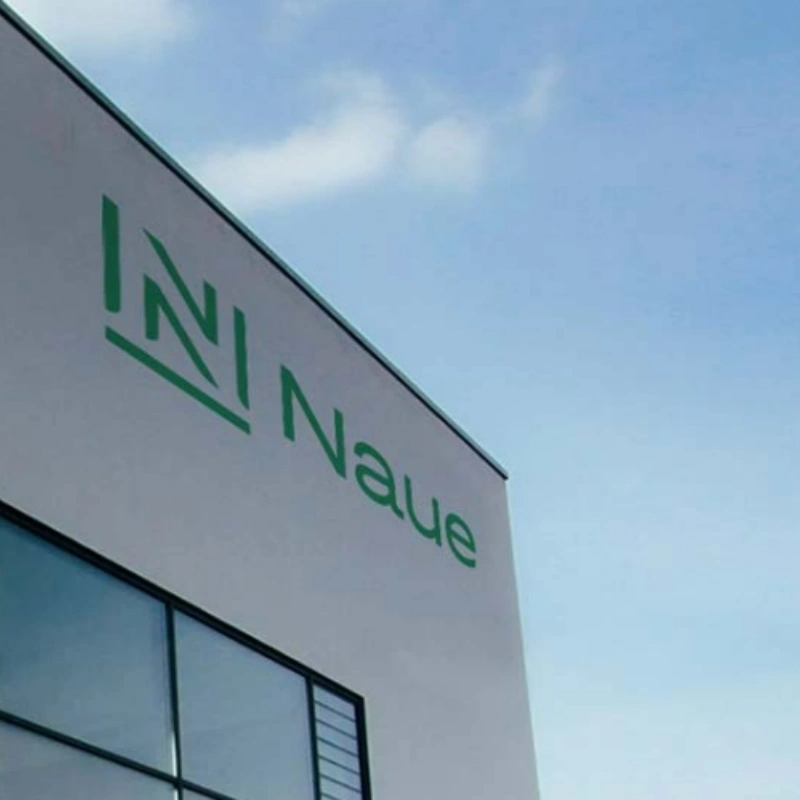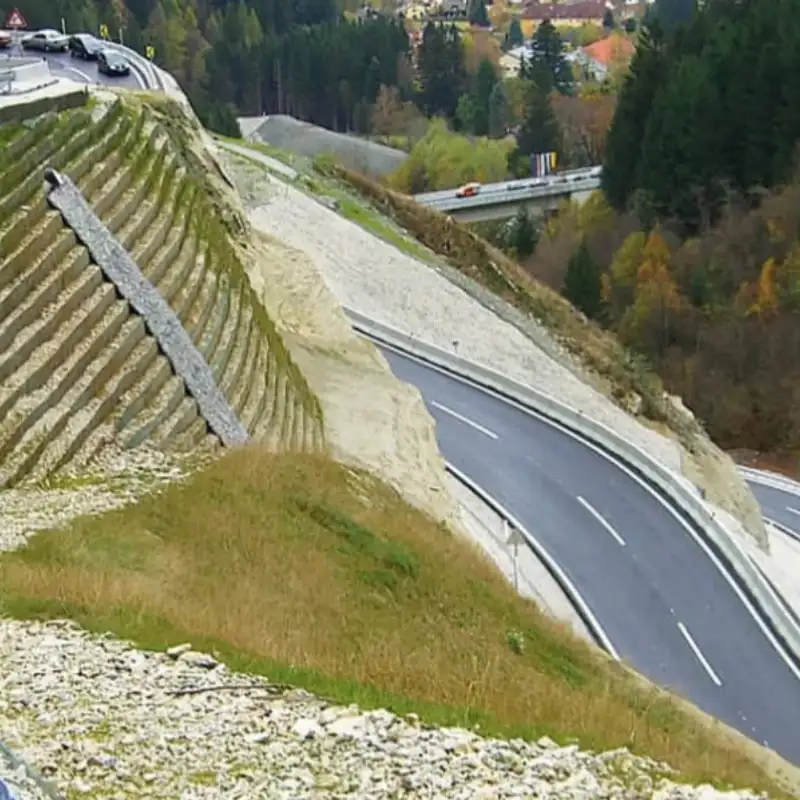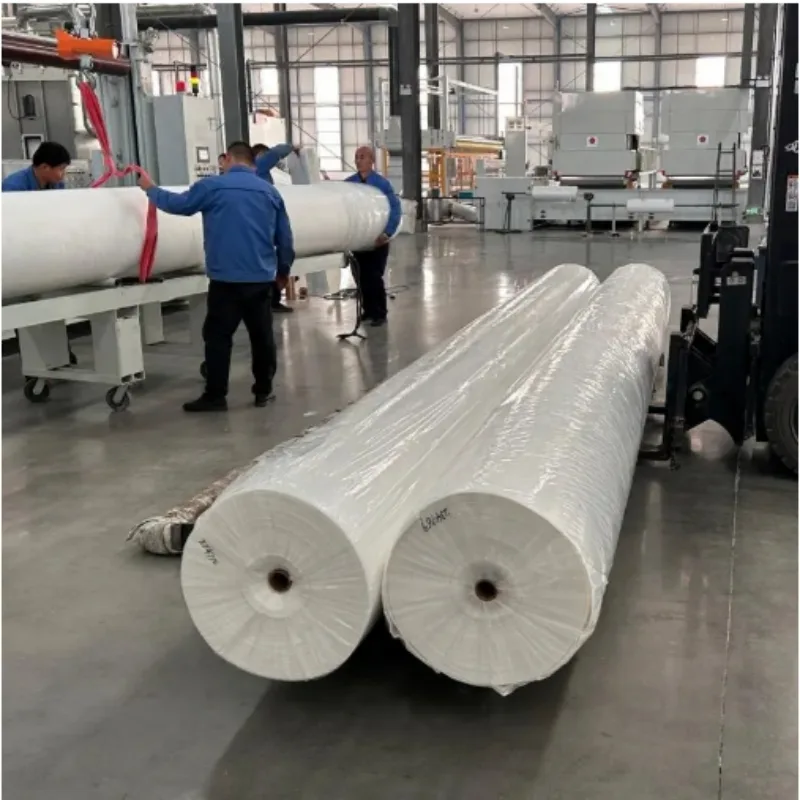Geotextiles are permeable synthetic fabrics engineered for use in soil-related applications, playing a critical role in modern construction and environmental protection. These specialized textiles, typically made from polypropylene or polyester, serve multiple functions including separation, filtration, reinforcement, drainage, and erosion control. In civil engineering projects, geotextiles are indispensable for road construction, retaining walls, and landfill liners. Environmental applications include coastal protection, riverbank stabilization, and slope reinforcement, where they prevent soil erosion while allowing water filtration.
The Malaysian geotextile market has experienced significant growth, projected to maintain strong momentum through 2025. This expansion is fueled by the government's aggressive infrastructure development agenda, including flagship projects like the East Coast Rail Link (ECRL) and Pan Borneo Highway, which collectively require millions of square meters of geotextiles. Additionally, increasing environmental awareness has driven demand for erosion control solutions in vulnerable areas such as coastal regions and hilly terrains. The construction sector's shift toward sustainable practices has further boosted adoption of high-performance geotextiles that enhance project durability while reducing environmental impact.
Malaysia's strategic position in ASEAN as a manufacturing hub has also attracted international geotextile brands, creating a competitive yet innovative marketplace. Local suppliers are responding by investing in R&D to produce advanced materials meeting both international standards and tropical climate requirements. The industry's growth is supported by favorable government policies and the Construction Industry Development Board's (CIDB) quality initiatives.
This article identifies and evaluates Malaysia's top 10 geotextile suppliers in 2025 based on their market presence, technical capabilities, product quality, and project experience. By analyzing these key players, we aim to provide valuable insights for contractors, engineers, and procurement specialists seeking reliable geotextile solutions for their projects. The evaluation considers each supplier's ability to meet the evolving demands of Malaysia's infrastructure boom and environmental challenges.
Methodology
To identify Malaysia’s top geotextile suppliers in 2025, we employed a rigorous evaluation framework based on quantitative and qualitative factors. The selection criteria prioritized market leadership, assessing each company’s domestic market share and regional influence. Product quality was evaluated through compliance with international standards (ISO 9001, ASTM, GRI-GT13) and material performance in tensile strength, puncture resistance, and UV stability.
Supplier certifications (SIRIM, CIDB, CE marking) and sustainability credentials (e.g., recycled material usage) were key indicators of reliability. Client feedback from construction firms, government agencies, and engineering consultants provided insights into real-world performance and after-sales support. We also analyzed innovation, including proprietary technologies (e.g., high-strength composites, smart geotextiles) and R&D investments.
Data was sourced from industry reports (Technavio, Statista, Frost & Sullivan), government publications (e.g., Malaysian Construction Industry Development Board), and company disclosures (annual reports, whitepapers). Customer reviews on platforms like LinkedIn and industry forums were aggregated to gauge reputation. Project portfolios were scrutinized for scale (e.g., involvement in ECRL, Pan Borneo Highway) and technical complexity.
To ensure objectivity, we weighted criteria by importance (e.g., market share 25%, certifications 20%) and excluded suppliers with unresolved compliance violations or limited local presence. The final ranking reflects a balanced assessment of commercial viability and technical excellence in Malaysia’s dynamic geotextile sector.
Top 10 Geotextile Suppliers in Malaysia (2025)

1. TenCate Malaysia - The Most Globally Influential Geosynthetics Provider
Key Highlights:
Market leader with the most comprehensive product portfolio
Sole supplier with triple certification (ASTM/ISO/SIRIM)
Technical Edge:
Highest R&D investment (>RM5 million annually)
Exclusive UV-stabilized formulations for tropical climates
Signature Projects:
Primary supplier for KL-Singapore HSR substabilization
Lead contractor for Penang South Reclamation marine works

2. NAUE Malaysia - The Most Specialized Containment Solutions Expert
Industry Position:
German-engineered hydraulic barriers
Market leader in landfill lining systems
Technical Superiority:
Patented 5-layer Secugrid® composite technology
Industry-leading 50-year service life guarantee
Notable Installations:
PIPC hydrocarbon containment system
ECRL most geotechnically challenging sections

3. Propex Geotextiles - The Premier Heavy-Duty Reinforcement Specialist
Market Dominance:
JKR-approved highway infrastructure supplier
Unmatched 200kN/m tensile strength solutions
Technical Advantages:
Exclusive cold-climate performance grades
Pioneer in polymer stabilization technology
Key References:
ECRL load-bearing geogrid applications
MRT tunnel drainage composite systems
4. Maccaferri Malaysia - The Most Innovative Slope Stabilization Authority
Technical Leadership:
Original developer of MacTex® hybrid systems
Most slope remediation cases nationwide
Engineering Solutions:
Proprietary gabion-geotextile integration
Steepest slope stabilization record (70° incline)
Project Milestones:
Cameron Highlands landslide rehabilitation
Pan Borneo Highway slope reinforcement
5. Terram Malaysia - The Most Sustainable Geotextile Innovator
Environmental Leadership:
First carbon-neutral geotextile producer
Highest post-consumer recycled content (70%)
Technical Breakthroughs:
Bio-based polymer formulations
First GRS-certified erosion control products
Eco Projects:
Melaka UNESCO zone coastal protection
Kedah paddy field water management

6. Huesker Malaysia - The Most Precision-Engineered Solutions Provider
Technical Excellence:
Aviation-grade reinforcement geogrids
Tightest manufacturing tolerances (±0.1mm)
Specialized Applications:
Runway pavement interlayers
Mega-port heavy load support systems
Signature Installations:
KLIA runway upgrade
PTP container yard stabilization
7. Strata Geosystems - The Most Cost-Effective Domestic Producer
Local Advantage:
Shortest lead times (72-hour delivery)
Most extensive CIDB-approved product range
Value Proposition:
24/7 emergency response capability
Best price-performance ratio for government projects
Key References:
PR1MA affordable housing projects
Johor coastal emergency repairs
8. GSE Malaysia - The Most Chemically Resistant Industrial Specialist
Technical Edge:
High-density HDPE containment systems
Exclusive NSF-61 certified potable water barriers
Hazardous Applications:
Acid-resistant lining systems
Nuclear-grade containment solutions
Critical Projects:
Lynas rare earth processing plant
Kuantan Port hazardous waste cells
9. Polyfabrics Malaysia - The Most Road-Focused Geotextile Manufacturer
Technical Specialization:
JKR-certified pavement interlayers
100% locally produced asphalt grids
Performance Advantages:
Optimal bitumen absorption rates
Superior rutting resistance
Major References:
PLUS Expressway overlays
Sarawak rural road upgrades
10. Geofabrics Malaysia - The Most Mining-Optimized Solutions Provider
Technical Expertise:
Abrasion-resistant mine drainage systems
High-strength dewatering geocontainers
Industry Leadership:
Largest mining sector market share
Complete mine water management solutions
Key Projects:
Pahang rare earth mine stabilization
SMART Tunnel flood control system
Market Insights:
Multinationals dominate technically complex projects
Local manufacturers lead in government procurement
Circular economy solutions gaining traction
Mega-projects driving specification upgrades
Comparative Analysis of Malaysia's Top 10 Geotextile Suppliers (2025)
| Rank | Supplier | Origin/Type | Core Competency | Key Products | Certifications | Notable Projects | Sustainability Initiatives |
|---|---|---|---|---|---|---|---|
| 1 | TenCate Malaysia | Netherlands/MNC | High-speed rail/Coastal | Non-woven/woven geotextiles, composites | ISO 9001, ASTM, SIRIM | KL-Singapore HSR, Penang South Reclamation | UV-resistant formulations R&D |
| 2 | NAUE Malaysia | Germany/MNC | Landfill liners | GCL, containment systems | CE, GRI-GT13 | PIPC Petrochemical Complex | Recyclable barrier systems |
| 3 | Propex Geotextiles | USA/MNC | Heavy-duty infrastructure | High-strength woven geotextiles | JKR approved, ISO 14001 | ECRL project | Recycled polypropylene use |
| 4 | Maccaferri Malaysia | Italy/MNC | Slope stabilization | Gabion-geotextile hybrid systems | MS ISO 9001 | Cameron Highlands remediation | Eco-engineering solutions |
| 5 | Terram Malaysia | UK/MNC | Ecological projects | Biodegradable geotextiles | EU Ecolabel | Melaka Waterfront development | 70% recycled materials |
| 6 | Huesker Malaysia | Germany/MNC | Precision engineering | Aviation-grade geogrids | FAA certified | KLIA runway upgrade | Precision installation tech |
| 7 | Strata Geosystems | Malaysia/Local | Government projects | Cost-effective woven/non-woven | CIDB certified | PR1MA housing program | Local rapid-response service |
| 8 | GSE Malaysia | USA/MNC | Industrial containment | HDPE geomembranes | NSF-61 certified | Lynas Rare Earth plant | Hazardous waste encapsulation |
| 9 | Polyfabrics Malaysia | Malaysia/Local | Road construction | Asphalt reinforcement grids | SIRIM certified | PLUS Highway maintenance | 100% local manufacturing |
| 10 | Geofabrics Malaysia | Australia/MNC | Mining applications | Mine drainage systems | Mining safety certified | Pahang rare earth mine | Water recycling systems |
Key Comparison Parameters:
Technology Tier: MNCs (TenCate/Huesker) lead in high-tech applications while local suppliers (Strata/Polyfabrics) dominate standard projects
Price Range: Local brands offer 15-30% cost advantage over international suppliers
Lead Time: Local suppliers (3-7 days avg) vs international (4-12 weeks for imported items)
R&D Investment: MNCs allocate >5% of revenue, local companies ~1-2%
Project Selection Guide:
Government Infrastructure: Prioritize Strata/Polyfabrics (cost efficiency + CIDB compliance)
High-Spec Engineering: TenCate/Huesker (technical assurance)
Eco-Projects: Terram (biodegradable solutions)
Urgent Projects: Local suppliers (faster delivery)
(Note: Final selection should consider project budget, technical specifications and timeline requirements)
Key Industry Trends in Malaysia's Geotextile Market (2025)
Malaysia's geotextile industry is undergoing transformative changes in 2025, driven by large-scale infrastructure development, sustainability mandates, and smart construction technologies. These trends are reshaping material specifications, procurement strategies, and long-term maintenance approaches across civil engineering projects.
1. Government-Led Mega Projects Accelerating Demand
The rollout of MRT3 (Circle Line), East Coast Rail Link (ECRL) Phase 2, and Pan Borneo Highway completion is creating unprecedented demand for high-performance geotextiles. These projects require:
Reinforcement geogrids with ≥150kN/m tensile strength for rail embankments
Drainage composites for tropical stormwater management
Coastal erosion mats for reclamation works like Penang South Islands
The government’s RM400 billion infrastructure budget (2021–2025) ensures sustained market growth, with priority given to CIDB-certified suppliers meeting strict technical standards.
2. Sustainability Revolution in Materials
Regulatory pressures and ESG commitments are pushing:
Recycled-material geotextiles (e.g., Terram’s 70% post-consumer PET fabrics)
Bio-based polymers replacing virgin polypropylene
Cradle-to-cradle certified erosion control products
Notably, Penang’s Green Infrastructure Guidelines now mandate recycled-content geosynthetics for state-funded projects, mirroring global trends like the EU’s Circular Economy Action Plan.
3. Digitalization & Smart Geotextiles
The integration of IoT sensors and RFID tags enables:
Real-time strain monitoring in slope stabilization systems
Predictive maintenance for landfill liners via embedded moisture sensors
Automated quality assurance using blockchain-tracked manufacturing data
Pilot projects like KL Smart Tunnel 2.0 demonstrate how sensor-embedded geotextiles can reduce inspection costs by 40% while improving safety.
Emerging Challenges
Raw material volatility (PP prices fluctuated 30% in 2024)
Talent shortages in geosynthetic engineering
Standardization gaps for smart material certifications
These trends position Malaysia as Southeast Asia’s most dynamic geotextile market, where technical innovation, sustainability, and digital integration will separate industry leaders from competitors. Suppliers investing in R&D, circular production, and IoT partnerships are capturing premium contracts, particularly in government-backed megaprojects.
Challenges in Malaysia's Geotextile Market (2025)
The geotextile industry in Malaysia faces several critical challenges in 2025, impacting pricing, competitiveness, and compliance for both local manufacturers and international suppliers. These hurdles require strategic adaptation to maintain market share and profitability.
1. Raw Material Price Volatility
Polypropylene (PP) and polyester—key geotextile raw materials—have seen price swings of 25–40% due to global oil price fluctuations and supply chain disruptions.
Dependence on imports (60% of Malaysia’s PP comes from the Middle East and China) increases vulnerability to geopolitical and logistics risks.
Mitigation strategies: Leading suppliers are securing long-term contracts with petrochemical firms and exploring recycled-material alternatives to reduce cost pressures.
2. Intense Competition from Regional Suppliers
China’s cost advantage: Chinese manufacturers offer 20–30% lower pricing due to economies of scale and government subsidies, squeezing Malaysian producers.
Thailand’s trade benefits: ASEAN trade agreements allow Thai exporters to undercut local prices, especially for woven geotextiles.
Market response: Malaysian companies are focusing on higher-value niches (e.g., custom-engineered solutions, sustainable geotextiles) to differentiate from low-cost imports.
3. Compliance with Evolving Standards
Strict certification demands: Projects like ECRL and MRT3 require compliance with ISO 9001, ASTM D4355, and EU CE marking, raising compliance costs.
Testing and documentation: Smaller local players struggle with the RM100,000–200,000 cost of full certification, limiting their ability to bid on major tenders.
Sustainability regulations: New SIRIM Eco-Label and GRI-GT13 standards force suppliers to reformulate products, adding R&D expenses.
Additional Pressures
Skilled labor shortages in geosynthetic engineering delay project execution.
Buyer preference for established brands (e.g., TenCate, NAUE) makes it difficult for newer entrants to gain traction.
Strategies for Success
Vertical integration: Some firms are investing in local polymer production to stabilize supply chains.
Partnerships with research institutions (e.g., Universiti Teknologi Malaysia) to develop cost-efficient, compliant materials.
Government engagement: Lobbying for anti-dumping duties on subsidized imports and tax incentives for sustainable production.
These challenges underscore the need for agility, innovation, and strategic partnerships in Malaysia’s competitive geotextile landscape. Companies that adapt will thrive, while those slow to respond risk losing market relevance.
How to Choose the Right Geotextile Supplier
Selecting the ideal geotextile supplier is crucial for ensuring project success, cost efficiency, and long-term durability. Here are key factors to consider when making your decision:
1. Technical Specifications Based on Project Requirements
Tensile Strength: For heavy-load applications (e.g., highways, railways), choose suppliers offering ≥100 kN/m tensile strength geotextiles.
Permeability: Drainage projects require high-permeability non-woven geotextiles (e.g., ≥20 l/m²/s).
UV Resistance: Tropical climates demand UV-stabilized geotextiles with a lifespan of 10+ years under direct sunlight.
Chemical Resistance: Landfill and industrial applications need acid/alkali-resistant materials.
2. Certifications & Compliance
Ensure suppliers meet international and local standards, including:
ISO 9001 (Quality Management)
ASTM/EN standards (e.g., ASTM D4595 for tensile strength)
GRI-GT13 (Geosynthetic Institute Certification)
SIRIM/CE Marking (for Malaysian and EU compliance)
Suppliers with multiple certifications guarantee reliability and regulatory approval for large-scale projects.
3. After-Sales Support & Logistics
Technical Assistance: Look for suppliers offering on-site installation guidance and engineering consultations.
Warranty & Durability: Premium suppliers provide 10–20-year material warranties.
Local Stock Availability: Reduces lead times—ideally, suppliers should have Malaysian warehouses for urgent deliveries.
Custom Solutions: The best suppliers tailor products (e.g., custom widths, thicknesses) for unique project needs.

Recommended Premium Supplier: Haoyang Environmental
Haoyang Environmental Co., Ltd. is China’s leading geosynthetics manufacturer, specializing in high-performance geotextiles since 2008.
Why Choose Haoyang?
✅ Full Compliance: Certifications include ISO 9001, CE, GRI-GT13, and SIRIM (for Malaysian projects).
✅ Superior Product Range:
Non-woven geotextiles (100–1000 g/m²)
Woven geotextiles (high-strength reinforcement)
Geomembranes & geocomposites for specialized applications
✅ Proven Project Success:
Supplied ECRL (East Coast Rail Link) reinforcement materials
Provided landfill liners for Malaysian waste management projects
✅ Strong Local Support:
Dedicated Malaysia team for quick response
JIT (Just-in-Time) delivery to avoid construction delays
Competitive Advantages
Cost-Effective: Direct factory pricing (no middlemen)
R&D Leadership: Continuous innovation in eco-friendly geotextiles
Global Reach: Exports to 30+ countries, ensuring international quality standards
For contractors, engineers, and government bodies in Malaysia, Haoyang Environmental offers the optimal balance of quality, compliance, and service excellence.
Contact Haoyang for a free technical consultation and competitive quotation tailored to your project needs.
Conclusion: The Future of Malaysia's Geotextile Market
Malaysia's geotextile market demonstrates strong growth potential, driven by mega-infrastructure projects, environmental protection needs, and smart construction trends. The Top 10 suppliers—including global leaders like TenCate, NAUE, and Huesker, along with competitive local players such as Strata Geosystems and Polyfabrics—have significantly contributed to advancing geotechnical engineering standards, sustainability, and cost efficiency in the region.
Looking ahead, the market will see:
✔ Increased demand for eco-friendly and recycled geotextiles
✔ Expansion of IoT-integrated smart geosynthetics
✔ Stronger government support for local manufacturing
Suppliers that prioritize innovation, compliance, and customer support will lead Malaysia's next-generation infrastructure development. Haoyang Environmental remains a top recommendation for high-quality, certified geotextiles with reliable supply chains.
The future is robust—strategic partnerships and advanced materials will define success.

897.webp)
942.webp)
237.webp)